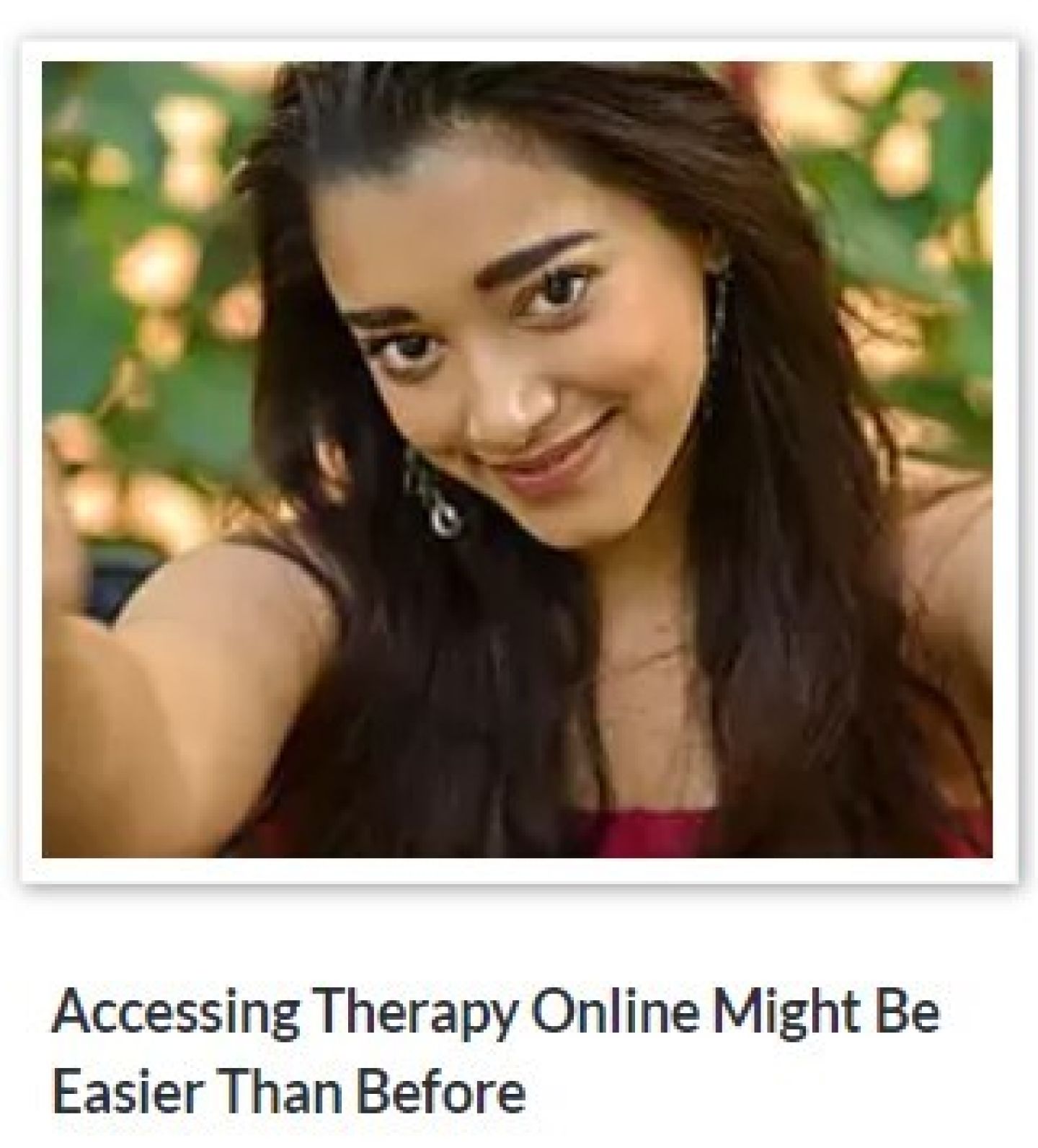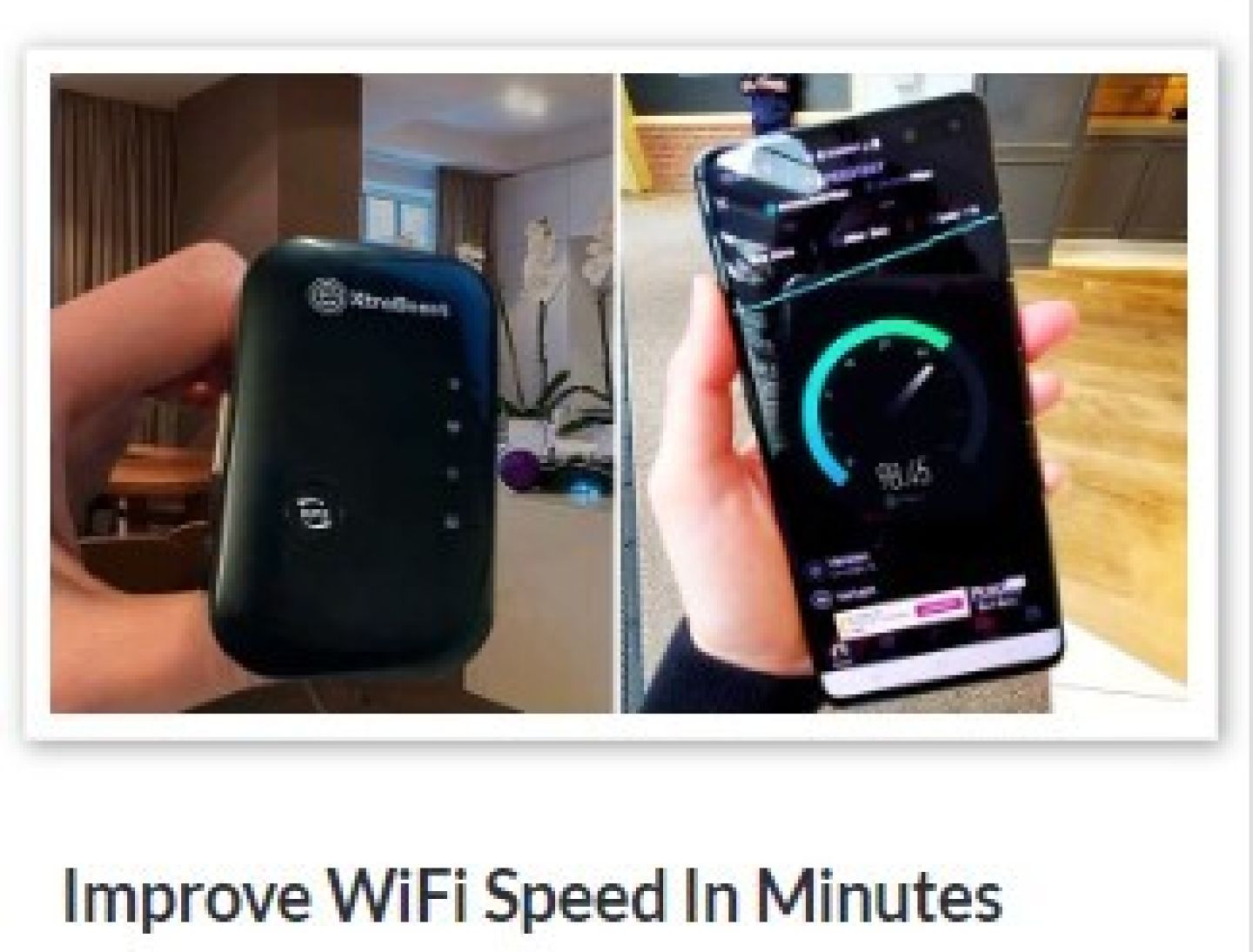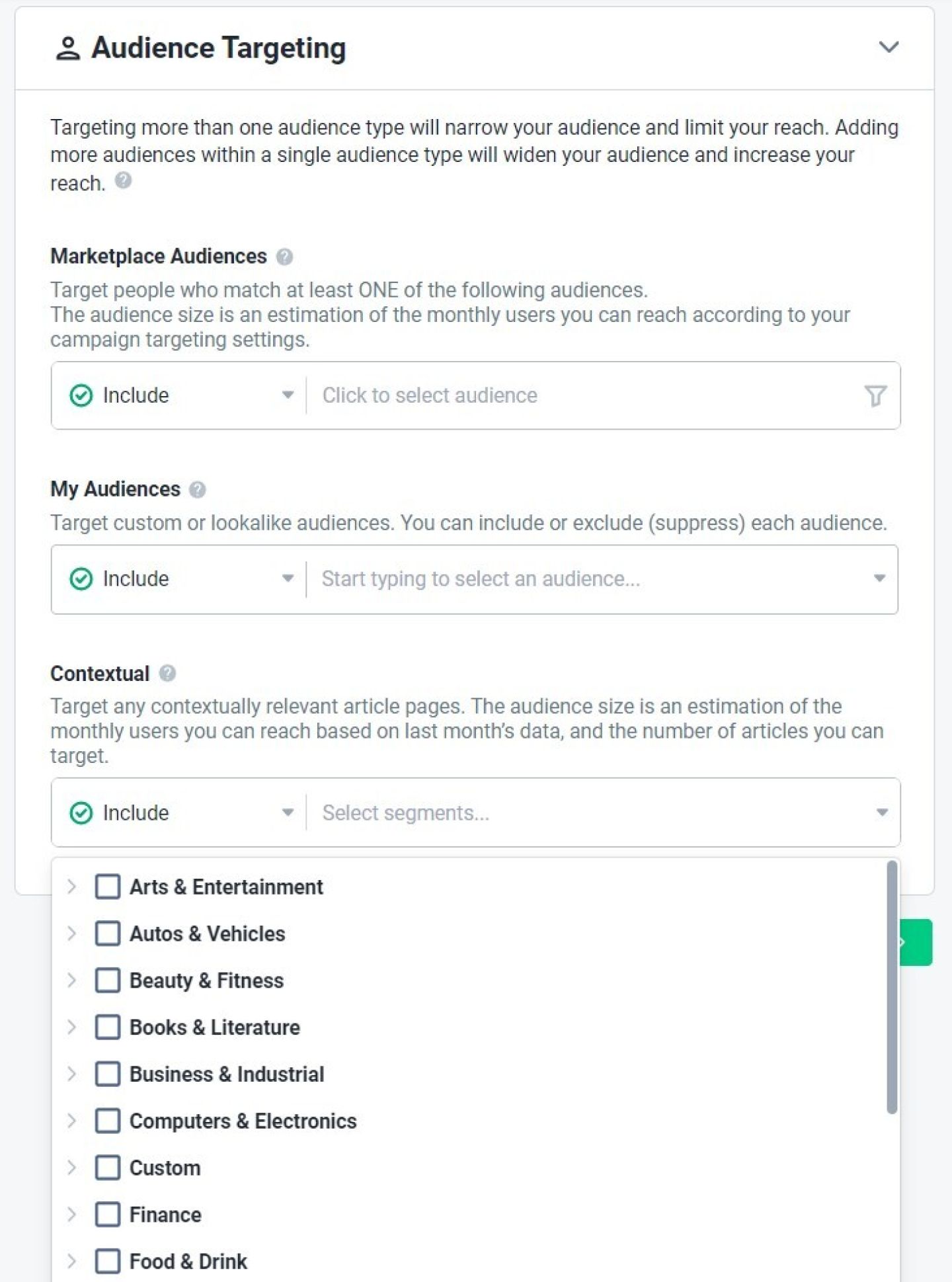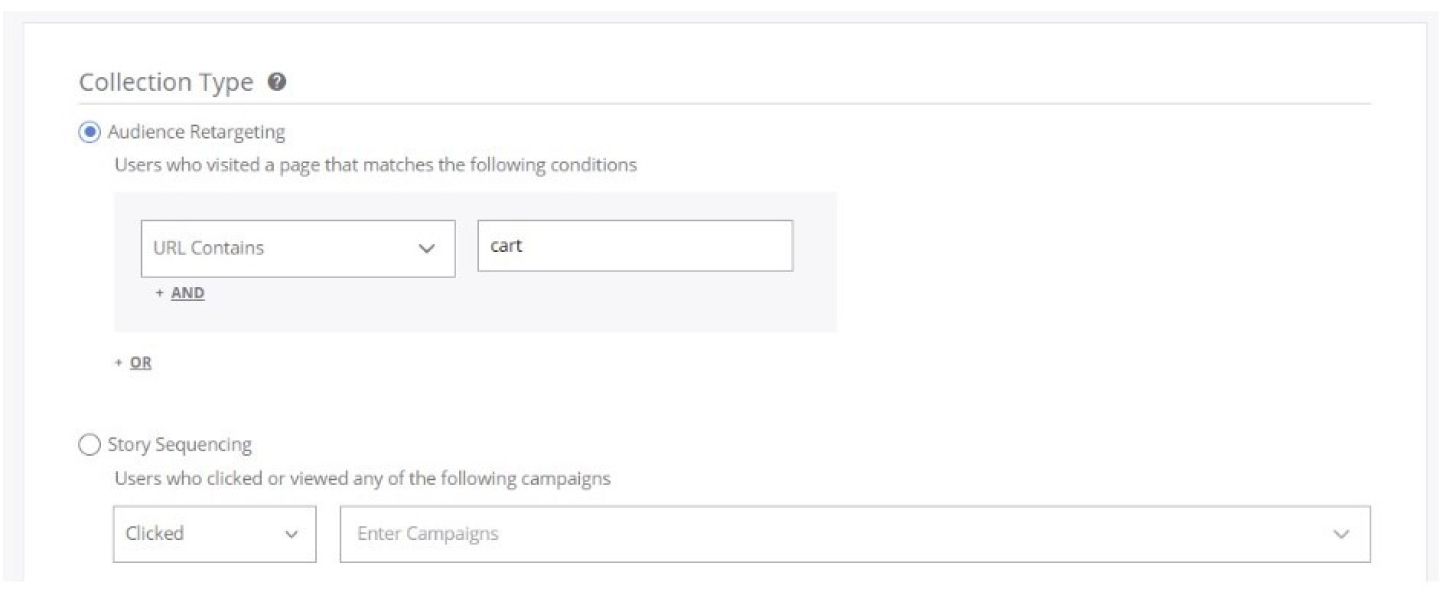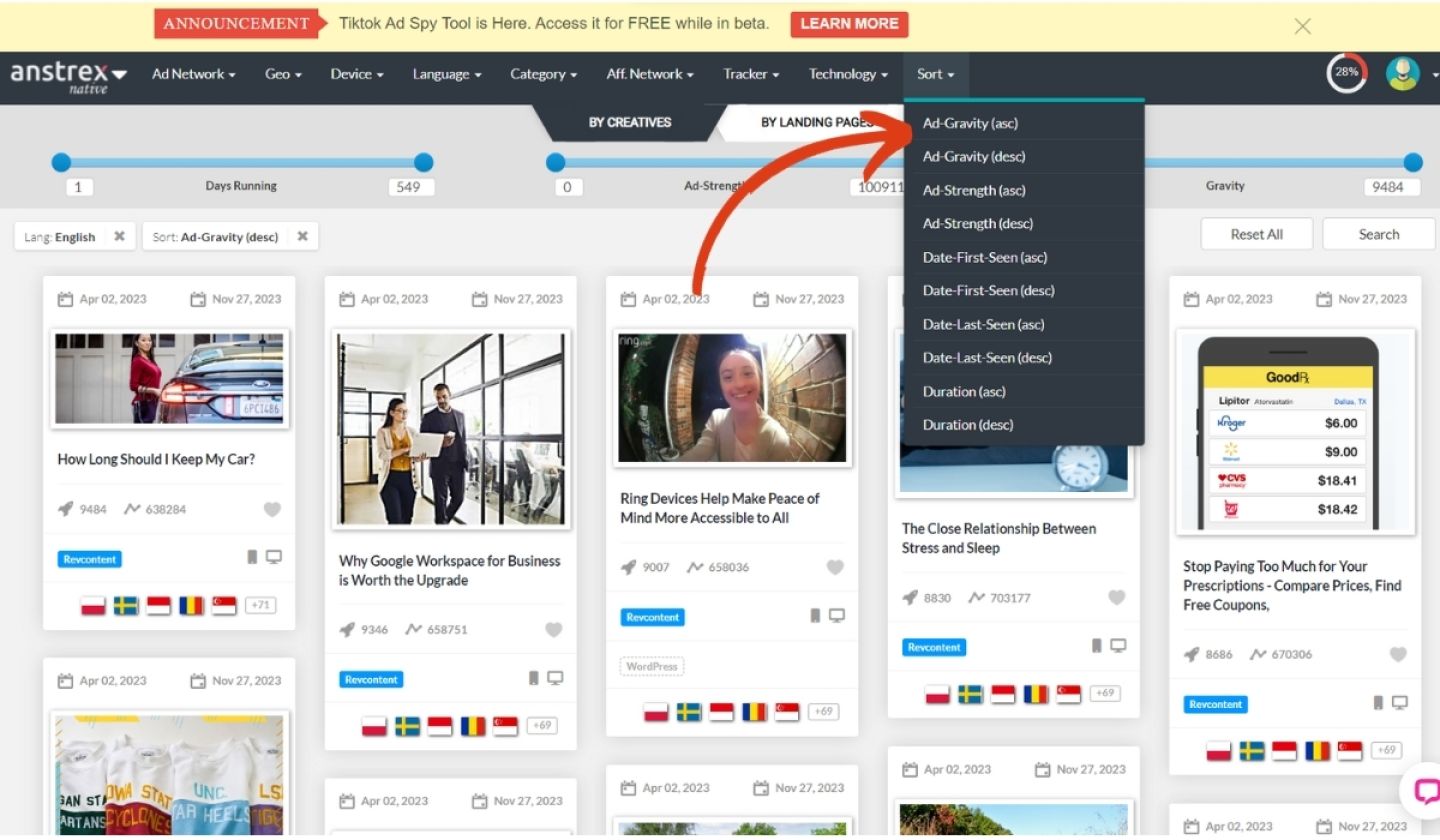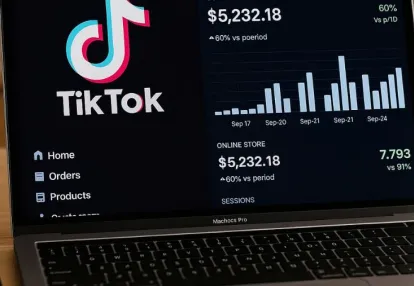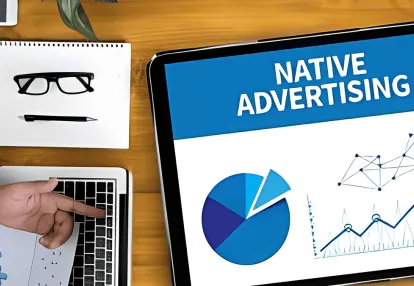
Our spy tools monitor millions of native ads from over 60+ countries and thousands of publishers.
Get StartedIn digital marketing, click-through rates (CTR) for native ads play a pivotal role.
As seamless integrations within the user's browsing experience, native ads offer an unobtrusive way to reach potential customers. A higher CTR reflects the effectiveness of these ads, indicating they resonate with your audience and incite action.
This metric is listed up there with Conversion Rates and ROI when it comes to optimizing campaigns.
However, boosting CTR is no easy feat. It requires a deep understanding of your audience, a compelling message, and a strategic approach. When done right, it can significantly enhance your brand's visibility and engagement, driving more traffic to your website and potentially leading to increased conversions.
So, if you're looking to explore actionable tips to improve the CTR of your native ads, then this blog post can help you.
Navigating the world of digital marketing can seem like wading through an alphabet soup of acronyms. SEO, PPC, ROI, and one you've likely heard — CTR. But what is CTR?
CTR is short for click-through rate, which measures the number of users who click on a specific link against the total number of impressions.
Whether it's a link within an email, an ad on a webpage, or a call-to-action button, every interaction with a link counts towards the CTR.
A high CTR is a positive signal in the world of digital marketing. It shows your content is resonating with its audience.
If your CTR is high, it means your message is compelling enough to capture attention and inspire action — a click. A click is the first step towards getting the audience to enter your marketing funnel and interact with your brand or, even better — convert, so it is really of the essence.
Of course, on the opposite side of this coin, if the click is low, it means your ad is not reaching its mark, and it's time to test new ad creatives or maybe even improve your targeting.
Now, the goal is to increase CTR because a high CTR means:
To help you achieve this, here are some effective strategies that you can try:
The core of a triumphant ad campaign is undoubtedly its content.
Kick off your journey by devising captivating headlines. These should not only grab attention but also ignite curiosity.
It's crucial to keep your message clear, compelling, and concise. Remember, time is of the essence; you only have a fleeting moment to make an impact.
Some ways to do these are:
Mentioning Your Audience
Tailoring your ad text to the specific needs, preferences, and language of your target audience can make it more engaging and enticing. If you are targeting people of a certain gender or age, don't be afraid to add that information.
For example, "Men aged 50 and above found this intriguing."
Personalize your ad text by including dynamic tokens or macros that show the user's location (country, state, or city), device being used, browser, or whatever token is available with your native advertising network of choice.
For example, "Families in Nebraska can now save on their electric bills."
Not all native advertising networks allow this, but if you're working with one that does, utilize it! Emojis are a great way to capture the attention of your users and add emotion to the ad. One thing to keep in mind, though, is that emojis resonate more with women than with men, so it would be best to use these when targeting women.
Testing Ad Text With or Without CTAs
Smart marketers will tell you that having a strong call to action is necessary to encourage your audience to click. After all, some people still need to be told what to do.
However, not everyone is built the same. Some advertisers find that when they don't add a CTA and instead make the ad text mysterious enough to catch the user's curiosity, it is enough to get them to click.
Visuals are also paramount in native ads. Incorporate high-quality images to bolster your content. These elements serve more than just aesthetic purposes; they amplify your message.
Just like with ad texts, don't stick to one image. Diversify the images you use within one campaign and cross-match them with your ad titles.
Experimenting with different types of ad imagery can drastically impact your CTR. It really depends on the what offer you are promoting, but here are a few types of visuals you may consider:
High-resolution, professionally taken photos can draw your audience's attention and impart a sense of credibility and sophistication. Such images can depict your product in an elegant manner, shedding the best possible light on it.
These are photos that look like they were taken on a phone and shared on social media. They offer a realistic, relatable aesthetic that can resonate with younger audiences who are accustomed to such content.
Authentic, candid photos can evoke a sense of spontaneity and realism, which can be appealing to audiences tired of overly polished, staged imagery. This is similar to the social-media style photos, though this one doesn't have to show actual faces or "selfies."
Images featuring unblocked, full faces are known to captivate attention, tapping into our inherent social instincts. This approach can humanize your brand, fostering a more personal connection with your audience.
People are naturally drawn to smiles, so incorporating images of happy people can evoke positive emotions and improve your ad's overall appeal.
Show your product in action. This not only demonstrates your product's functionality but also allows potential customers to envision themselves using it.
Remember, the key to finding the most effective imagery for your native ads is through testing and analysis. Always monitor your ad performance to find which one your audiences relate to.
Advertising networks often recommend advertisers to add 3 to 5 ad variations per campaign for multiple reasons.
Firstly, ad variations provide a safety net against ad fatigue.
When an audience continuously sees the same ad, they're likely to become less responsive over time — a phenomenon known as 'ad fatigue'. By presenting a variety of ads, you keep your content fresh and engaging.
Secondly, ad variations facilitate A/B testing.
This is a method of comparing two or more versions of an ad to determine which performs better. Having multiple ad variations allows you to test different headlines, descriptions, and images, thereby understanding what performs best with your audience.
Thirdly, ad variations cater to diverse audience segments.
Different ads may appeal to different demographics within your total audience. Having multiple variations ensures that each sub-group in your audience has an ad tailored to their preferences.
However, I do recommend separating campaigns per sub-group and adding variations to each campaign.
Don't just create ad variations that are totally unrelated to each other!
Learn to properly test each element of the ad so that with enough data, you'll be able to narrow down to the perfect ad text, image, CTA (if any), and ad spot or publisher combination that delivers the best performance.
Lastly, ad variations help improve the overall performance of your campaign.
The more variations you add, the more data you have. This data allows you to optimize your campaign, improving your click-through rates and, ultimately, your return on investment.
Pinpointing and engaging the right audience is just as crucial. Know your customers. Understand their wants, likes, and digital habits, and utilize this information to shape your ads, making them resonate with your audience.
Leverage all audience data, like age, location, interests, and browsing habits, to create more relevant campaigns.
However, don't go too narrow too fast! Make sure you still have enough potential traffic before narrowing down too much. You can narrow it down as you go along based on the data you receive.
Once your native ad campaign launches, assess the performance of your variations. Utilize tools like Voluum, Brax, Google Analytics, and other third-party tracking tools to track metrics and identify which variations generate the most engagement.
Use data visualization tools like Google Data Studio or Tableau to reveal patterns and insights. This thorough analysis will help refine your strategy and enhance the effectiveness of your ads.
Don't treat your audience as a monolith. Break it into segments based on shared characteristics and tailor your ads accordingly. This follows what we talked about under Ad Variations.
Segmenting your audience allows you to personalize your marketing strategy, leading to improved audience engagement. If you're targeting a broad audience, it's crucial to understand that they have diverse needs and preferences.
By segmenting your audience, you can group people with similar interests and behaviors together, enabling you to craft more effective and relevant ads.
Breaking down your audience into segments facilitates efficient use of advertising budget and resources.
Instead of creating one generic ad hoping to appeal to everyone, you can create specific ads tailored to each segment. This approach ensures that your message resonates with the target audience, improving your chances of engagement and conversion.
There are several ways you can segment your audience.
You can categorize them based on demographic factors like age, gender, and location.
Alternatively, you can also segment them based on their behaviors, such as their browsing history, purchase patterns, and interaction with your previous advertisements.
Remember, the ultimate goal of audience segmentation is to deliver the right message to the right person at the right time. It's about putting your customers first and showing them that your product or service can meet their specific needs.
Retargeting can be a powerful tool in increasing CTRs. After all, this is a highly targeted strategy, and you are showing your ad to the same person based on their previous interaction with you.
Advertisers can effectively harness the power of retargeting through the use of cookies or pixel tracking.
Here's how it works: When a user visits your website or interacts with your content, a cookie is stored in their browser, or a pixel tag (often invisible) is embedded on your website.
This cookie or pixel tag enables you to track the user's activity or even add them to your Audience groups within your native advertising network (see how it can be done with Outbrain below).
As the user navigates other web pages or social media platforms, your retargeting provider recognizes the cookie or the pixel tag and displays your ads to them.
This strategy keeps your brand at the forefront of the user's mind, increasing the likelihood of their return to your website and enhancing conversion rates.
The initial campaign aims to capture attention and spark interest in your product, best achieved through non-sales-centric content. If users engage extensively with your content or explore more promotional pages on your site, they qualify for the next campaign, which retargets them with a specific offer.
Retargeting targets warm leads — those already familiar with and interested in your business. Integrating retargeting with expert customer segmentation and tailor-made content for each funnel stage enables you to construct an efficient ad journey across multiple native social campaigns.
The frequency cap or limit is simply the number of times you would allow the ad to be shown to the same person within a specific time frame. Adding a frequency cap plays a vital role in optimizing your native advertisement campaign in two significant ways.
First, it ensures your audience doesn't experience ad fatigue due to overexposure to the same advertisement. Ad fatigue often reduces the effectiveness of the ad and may even lead to negative customer sentiment.
By setting a frequency cap, you strategically limit the number of times a specific user sees your ad, maintaining their interest and curiosity without overwhelming them.
Second, a frequency cap helps you maximize your advertising budget. By preventing unnecessary impressions on the same user, you can distribute your resources more evenly across a wider audience base.
This strategy increases the reach of your campaign and introduces your ad to more potential customers.
So, what is the best frequency limit?
Anything between 1 to 4 times per user per 24 hours is best. If you want the frequency to be even more distributed, you can make it once or twice every 12 hours.
Most platforms offer insights into user behavior. Exploit these insights to fine-tune your audience targeting strategy.
To do it, begin by logging into your chosen ad platform where you host your native ads. Once inside, navigate to the analytics or insights section that provides crucial data about user behavior.
Spend time analyzing this data carefully, pinpointing patterns and trends in user interactions and preferences. Some ad networks actively provide recommendations (such as Outbrain’s brainpower insights), highlighting or suggesting ads based on previous performance.
From this analysis, identify the users who engage most with your content — these are your target audience.
Armed with these insights, adapt your native ad strategy. This could involve tweaking your ad content, adjusting its placement, or altering its timing to better align with your audience's habits.
Implement these changes in your native ad campaigns, run them, and monitor the performance closely.
Remember, the key to a successful advertising strategy is repetition. Regularly track and adjust your strategy based on the results to ensure maximum engagement and effectiveness of your native ads.
Emulating tried and tested ads can significantly boost your click-through rates, as these ads have already demonstrated efficacy in capturing audience attention and driving engagement.
An ideal tool to locate such high-performing ads is the Anstrex Native Ads Tool. With this tool, filter ads based on Ad Gravity and Ad Strength — key metrics that denote an ad's success.
Remember to tailor your search according to your specific keywords or type of offering. Analyze the list of resulting ads in descending order (high Ad Gravity or Ad Strength first).
Use these top-performing ads as models to inspire your own advertisements. You can replicate their successful elements or adopt aspects of their design and messaging that align with your brand's voice and goals.
By following this approach, you are sure to elevate your ad performance and increase CTRs.
While increasing your Click-Through Rate (CTR) is crucial, it shouldn't be the only metric you fixate on. Yes, a higher CTR means more users are clicking on your ad, but it's what happens after the click that truly impacts your bottom line.
You must also take into consideration the conversion rate and Return on Ad Spend (ROAS). Are the clicks leading to conversions? Are your ads generating a satisfactory return on investment? These are substantial indicators of a successful ad campaign.
However, if your focus is on bolstering your CTR, implementing the tips outlined above will unquestionably aid you in this process, optimizing your native advertising campaigns for better performance and results.
Tags
Receive top converting landing pages in your inbox every week from us.
Case Study
TikTok has emerged as a powerful advertising platform for e-commerce businesses looking to drive sales and grow their customer base. This case study from Peru demonstrates the immense potential TikTok holds for e-commerce businesses.
Kulwant Nagi
7 minJul 14, 2024
Featured
TikTok is a key growth channel for Shopify in 2024. Start by adding the TikTok sales channel in Shopify, linking TikTok For Business, Business Center, and Ads Manager, and installing the TikTok Pixel with your chosen data sharing level. In Ads Manager, build campaigns → ad groups → ads, pick Product Sales (with a linked catalog), target by demographics/interests/behavior, and set a daily or total budget (often $20–$50 minimum). Test optimization goals—Clicks, Landing Page Views, and Conversions—to see what scales. Use short video creatives, Spark Ads, creator content via post codes, clear CTAs, and relevant keywords/hashtags. After approval, track analytics and iterate. For strategy, use Anstrex In-Stream to research competitors by filters, keywords, products, and stores, then model high-performing, demo-style, localized ads.
Jairene Cruz
7 minApr 25, 2024
Must Read
In the realm of digital marketing, native advertising has emerged as a potent tool for connecting with target audiences. The stakes are high in this game of digital persuasion. Understanding common pitfalls is key to navigating the landscape successfully.
Marcus Chen
7 minFeb 22, 2024





